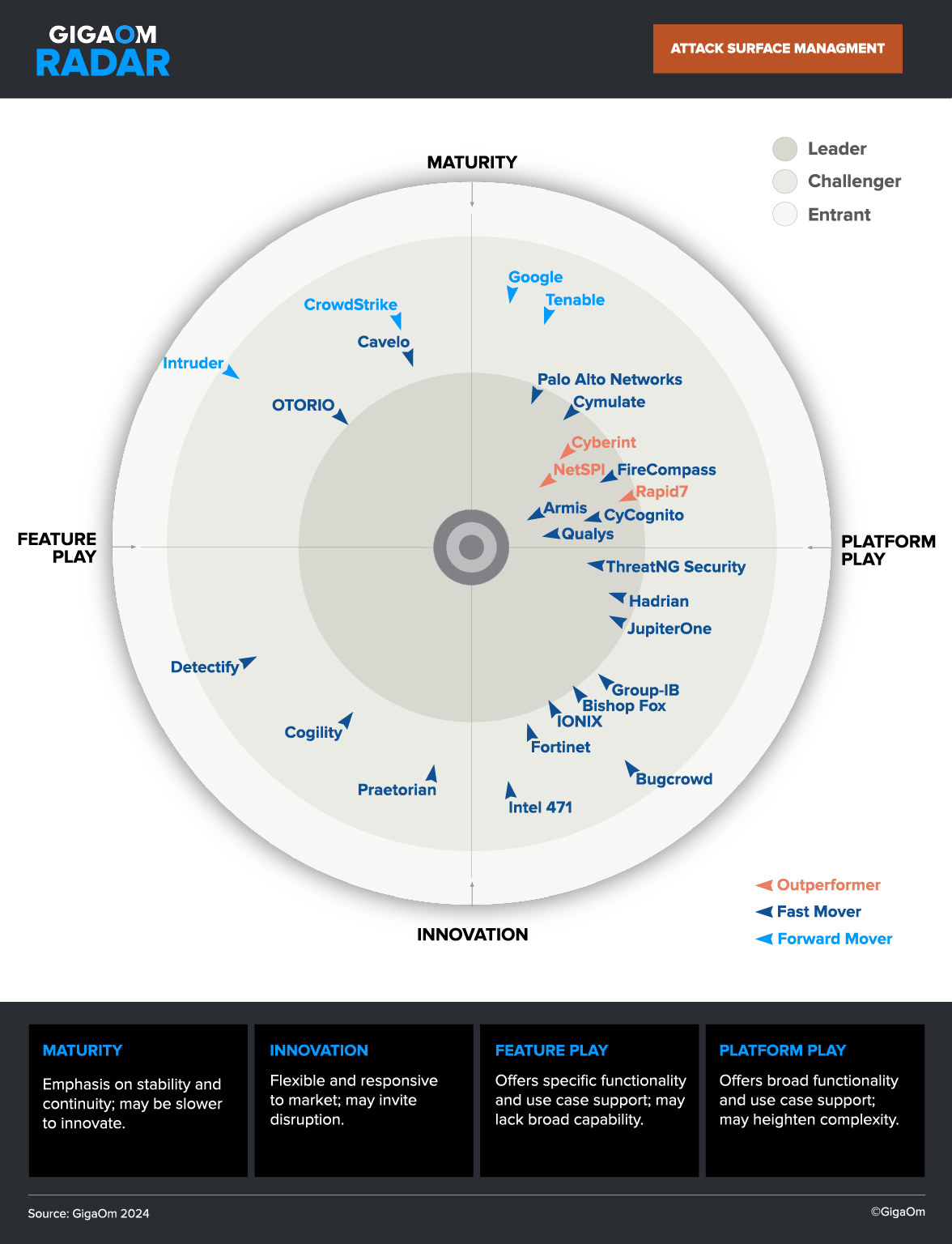What is Attack Path Analysis?
Attack path analysis is a cybersecurity approach for identifying and understanding the potential paths a threat actor might exploit to access sensitive assets or environments. It involves mapping out the sequence of vulnerabilities, misconfigurations, and access controls that an attacker can leverage to infiltrate a network. By analyzing these paths, organizations can predict potential attack patterns, prioritize response measures, and strengthen their security posture.
This method examines both technical and contextual factors, such as the dependencies between IT systems and human behaviors. Organizations use attack path analysis to proactively and retroactively understand vulnerabilities. It aligns offensive and defensive cybersecurity practices, bridging the gap between simulated attack scenarios and real-world operational security strategies.
This is part of a series of articles about attack surface management.
Attack Vector vs. Attack Surface vs. Attack Path
Although often used interchangeably, the terms attack path, attack vector, and attack surface have distinct meanings in cybersecurity:
- An attack vector refers to the precise method or entry point used to exploit a vulnerability, such as email- or SMS-based phishing.
- An attack surface includes all potential entry points, such as networks, devices, or software, that an attacker can exploit.
- An attack path takes this further by describing the step-by-step chain of events or points that could be exploited sequentially to gain unauthorized access.
Together, these elements form an interconnected picture. Understanding how the attack surface provides access to attack vectors, which then create attack paths, is crucial for preventing breaches. For security, it’s essential to address the intersections between these concepts rather than treating them in isolation.
How Attack Path Analysis Works
Here is the general process used in attack path analysis:
- Data collection: The first step is to collect data from various components, such as endpoint configurations, identity and access management (IAM) settings, vulnerability scans, and network topologies. Security tools like SIEMs, CMDBs, and cloud security platforms are often integrated to gather this data efficiently.
- Constructing a model of the environment: The collected information is used to construct a graph-based model of the IT environment. Nodes represent assets, accounts, and privileges, while edges indicate trust relationships, network access, or exploitable vulnerabilities. This model allows security teams to identify chains of weaknesses that an attacker could traverse—known as attack paths.
- Attacker path simulation: Algorithms then simulate how an attacker might move laterally across systems. These simulations evaluate the likelihood and impact of different attack scenarios. Tools prioritize paths that lead to critical assets with minimal resistance, highlighting high-risk routes.
- Guiding remediation: Analysts now use insight from the previous steps to guide remediation. This can include patching vulnerabilities, adjusting permissions, segmenting networks, or deploying controls to break key links in the most dangerous paths.
- Continuous monitoring: Ensures that new paths are identified as the environment evolves.

GigaOm Radar for Attack Surface Management 2025
Assess the value and progression of ASM solutions to help you select the best solution.
Access the GigaOm Radar for Attack Surface Management 2025 to get an overview of the available ASM solutions, identify leading offerings, and evaluate the best solution for you.

Attack Path Analysis Use Cases
Red Teaming and Penetration Testing
Attack path analysis enhances red teaming and penetration testing by providing a realistic map of how adversaries might move within a system. Instead of relying on random probing or isolated exploits, red teams can simulate attacks that mimic likely adversary behavior based on known weak points and trust relationships.
Penetration testers use this analysis to validate theoretical attack paths by attempting to exploit them in controlled environments. This leads to more focused, high-value testing efforts and helps prioritize fixes for exploitable chains rather than isolated issues.
Compliance and Audit Readiness
Regulatory frameworks often require organizations to demonstrate control over privileged access, asset exposure, and network segmentation. Attack path analysis supports this by showing how well existing controls prevent unauthorized access to sensitive data or systems.
Security teams can use path insights to document risk mitigation strategies, justify compensating controls, and provide evidence of proactive security practices during audits. This reduces the burden of compliance reporting and helps identify gaps before regulators do.
Cloud Security Posture Management (CSPM)
In cloud environments, misconfigurations and overly permissive roles can create complex, hard-to-spot attack paths. Attack path analysis reveals these hidden connections by mapping how privileges, service identities, and network access interact across cloud services.
By visualizing attack chains in multi-cloud or hybrid setups, teams can reduce privilege sprawl, correct misconfigurations, and enforce least privilege principles more effectively. It supports continuous posture management by adapting to dynamic cloud environments in near real-time.
Third-Party Risk Assessment
Suppliers, partners, and contractors often connect to internal systems, expanding the attack surface. Attack path analysis helps identify indirect paths that may originate from third-party access points.
Organizations can assess how far an external actor could traverse if compromised and adjust segmentation, permissions, or monitoring to reduce exposure. This proactive assessment improves third-party risk management and strengthens overall supply chain security.
Related content: Read our guide to attack surface analysis.
Attack Path Analysis Challenges
While attack path analysis is becoming an important part of threat modeling, it raises a few important challenges for organizations.
Dynamic Environments
Modern IT infrastructures are constantly changing, with frequent updates to systems, users, configurations, and assets. These changes can render previous attack path analyses outdated or incomplete. New software deployments, policy updates, or user role changes may introduce fresh vulnerabilities or eliminate old ones. As a result, attack paths must be re-evaluated continuously to maintain accuracy and relevance.
Security teams must implement automated discovery and real-time updates to capture changes across cloud, hybrid, and on-premises environments. Without dynamic tracking, organizations risk relying on stale data, which can give a false sense of security or miss emerging threats.
Data Accuracy
Accurate attack path analysis depends on high-quality data from various sources. Incomplete, outdated, or misconfigured data inputs—such as missing IAM settings or outdated asset inventories—can skew analysis and obscure real attack paths. Inaccurate data leads to either underestimating risks or chasing false positives.
Ensuring data quality requires integrating reliable sources, validating configurations, and regularly auditing data collection processes. Teams should also watch for blind spots in visibility, such as unmanaged devices or unmonitored external services, which can become starting points for attacks.
Complexity
Enterprise networks often involve thousands of assets, complex trust relationships, and layered access controls. Modeling these accurately at scale is computationally and operationally demanding. The more complex the environment, the harder it becomes to distinguish meaningful attack paths from benign configurations.
Overcoming this challenge requires simplification through risk-based prioritization. By focusing on paths to critical assets and eliminating unlikely scenarios, security teams can reduce noise and identify high-impact issues. Leveraging advanced graph algorithms and machine learning can also help process large datasets more efficiently.
Best Practices for Effective Attack Path Analysis
1. Identify and Prioritize Critical Assets
To conduct effective attack path analysis, organizations must first determine which assets are essential to operations, security, and compliance. These typically include domain controllers, key databases, authentication services, intellectual property, and systems with sensitive customer or financial data. Criticality can be assessed based on the asset’s role in business continuity, its data sensitivity, and the legal or regulatory impact of compromise.
Once identified, these assets should be tagged in asset management systems and incorporated into attack path models as high-value targets. Assigning risk levels and business impact scores to assets helps prioritize which paths require immediate attention. This also allows analysts to focus simulations and remediation efforts on high-impact scenarios, ensuring efficient use of limited security resources.
2. Implement Continuous Monitoring and Analysis
Given the fluid nature of modern IT environments, where infrastructure changes rapidly due to deployments, patching, and policy updates, continuous monitoring is essential for maintaining up-to-date attack path visibility. Static snapshots quickly become obsolete, missing newly introduced vulnerabilities or misconfigurations.
Organizations should automate data collection across cloud environments, on-premises infrastructure, and hybrid setups using tools that support real-time or scheduled synchronization. Event data from SIEMs, vulnerability scanners, identity providers, and configuration management systems should be fed into the attack path engine to detect changes that create or close paths.
Continuous analysis enables proactive defense, where threats are mitigated before they can be exploited. It also supports automated alerts and ticketing workflows when high-risk paths to critical assets are detected, streamlining incident response and reducing mean time to remediation.
3. Utilize Graph-Based Modeling
Graph-based models are central to modern attack path analysis due to their ability to represent and compute complex relationships at scale. In these models, nodes typically include users, systems, cloud resources, or service identities, while edges represent permissions, network access, or known vulnerabilities.
Graph traversal algorithms can simulate how an attacker might pivot from one asset to another, revealing viable chains of exploitation. Analysts can use shortest-path, centrality, and reachability analyses to discover critical junctions in the environment—such as misconfigured servers or overprivileged accounts—that facilitate lateral movement.
Advanced models incorporate edge weights to represent exploit difficulty or time-to-compromise, enabling risk-based path prioritization. Some platforms also support “blast radius” calculations to show how far an attacker can reach from a compromised node, helping justify segmentation or control changes.
4. Integrate with Threat Intelligence Frameworks
Static analysis of attack paths can miss key insights unless it’s informed by the tactics and tools used by real adversaries. Integrating threat intelligence provides context by mapping observed attacker behaviors—such as privilege escalation methods or known lateral movement tools—to your environment’s structure.
This integration allows analysts to simulate not just theoretical attacks, but those that closely resemble the playbooks of active threat groups. For example, paths that match MITRE ATT&CK techniques used by APTs or ransomware gangs can be prioritized for investigation or defensive action.
Additionally, threat intelligence feeds can highlight emerging vulnerabilities or zero-day exploits relevant to assets in your graph, prompting immediate reanalysis. This dynamic integration ensures the attack path analysis remains threat-informed and aligned with current adversary capabilities.
5. Regularly Review and Update Analysis
Even with automated tools, periodic manual reviews are essential to ensure accuracy and strategic alignment. These reviews should validate that critical assets are still properly defined, trust relationships are current, and threat models reflect organizational priorities.
Reviews should be scheduled after major infrastructure changes, cloud migrations, or mergers and acquisitions. They should also incorporate feedback from red teams, incident investigations, and audit findings to correct false assumptions or overlooked risks.
Additionally, the parameters used in modeling—such as risk scoring, privilege weights, or simulation thresholds—should be assessed and updated to reflect evolving business goals and threat landscapes. A strong review cycle ensures that attack path analysis remains relevant, actionable, and integrated into broader security governance efforts.
Attack Path Analysis with CyCognito
CyCognito helps organizations uncover and disrupt attack paths by continuously analyzing external-facing assets and their interdependencies. Unlike traditional tools that require agent-based telemetry or manual scoping, CyCognito operates outside-in—simulating the adversary’s perspective to map exposed assets, relationships, and risks across cloud, on-premises, and third-party environments.
Its platform automatically identifies attack paths leading to high-value assets by:
- Discovering hidden and unmanaged assets across subsidiaries, cloud accounts, and partner networks
- Mapping trust relationships and misconfigurations that create lateral movement opportunities
- Building business context that help understand urgency and speed remediation efforts
- Simulating attacker behavior to reveal exploitable chains of vulnerabilities, exposed services, and weak controls
- Prioritizing remediation based on business impact and attacker accessibility, not just CVSS score
With real-time visibility and graph-based modeling, CyCognito empowers security teams to proactively close attack paths before they are exploited—helping reduce breach exposure, accelerate remediation, and demonstrate measurable risk reduction.

GigaOm Radar for Attack Surface Management 2025
Assess the value and progression of ASM solutions to help you select the best solution.
Access the GigaOm Radar for Attack Surface Management 2025 to get an overview of the available ASM solutions, identify leading offerings, and evaluate the best solution for you.














